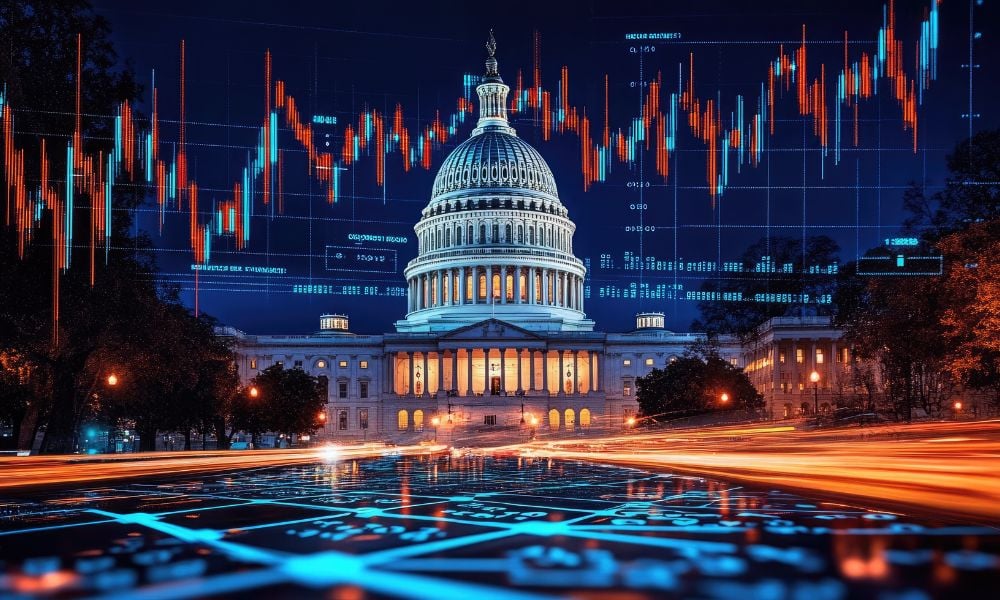Chief investment strategist explains why markets were unmoved by Iran conflict without subscribing to social media analysis trend

The United States’ sudden entry into conflict between Iran and Israel in late June prompted a market reaction that, on the surface, could have validated an increasingly popular social media investment thesis. Markets digested the attack with an initial shrug and a subsequent rally when Iran’s response was interpreted as muted. Even the price of oil fell, despite possible risks to both Iran’s domestic oil production and the possibility that it might close the Strait of Hormuz — a chokepoint through which 20 per cent of global oil production flows.
It was the sort of market non-event that appeared to validate a view that’s taken off on social media. The ‘nothing ever happens’ viewpoint, which started on political forums on 4chan and Reddit, has seen more mainstream cachet as markets seem to discount tail risks and recover in line with the TACO (Trump Always Chickens Out) trade that has also gained some momentum following ‘liberation day.’ Despite agreeing with the view that markets are currently discounting tail risks, Sébastien Mc Mahon is keenly aware that things do, in fact, happen.
The Chief Strategist and Senior Economist at iA Financial Group explained why markets have been inoculated against some tail risks as well as the specific reasons they shrugged at the Iran escalation. He noted, too, that there is plenty of evidence around showing major structural shifts that advisors and asset managers need to be aware of.
“You cannot say ‘nothing ever happens, thus I'm going to be all in on risk.’ That's why in the funds that we manage in our team we remain somewhat risk on but we have a bunch of trades that are more defensive. Like being short the US dollar and long the yen and the euro. A few of those trades, which are uncorrelated with what's going on in the stock market, are useful,” Mc Mahon says. “Overextending your risk budget right now, because ‘nothing ever happens,’ I think that's a very poor investment strategy.”
Mc Mahon explained exactly why equity and oil markets took the US bombing of Iran with such a shrug. Markets, he says, tend to gravitate towards what works and what has worked in recent years. What has worked is fading geopolitical events and changes into the background, discounting them as tail risks.
Even oil markets, which would appear to have been most immediately impacted by the escalation of conflict with Iran, were discounting oil following the US bombings. Mc Mahon notes that Iran’s total domestic production is the same as the current excess supply of Saudi Arabia and the UAE combined. If Iranian production was brought offline, those two countries could have made up the shortfall. The risk of Iran shutting the Strait of Hormuz, despite greater impact to the oil market, was priced in as a tail risk. As soon as Iran’s response to the US was taken as muted that tail risk was shrugged off completely.
While these kind of geopolitical tail risks are not driving markets, Mc Mahon argues that things are happening on more structural levels. Perhaps most notable is the ongoing decline of the US dollar relative to other major global currencies. He views that decline as structural, in part due to the reputational damage that has been done to the US economy by this trade war. While institutional capital has not fled the US, many foreign buyers are choosing not to make marginal purchases of US assets, be they US equities, treasuries, or USD. Central banks, too, are reducing the dollar weights in their reserves for a host of reasons, while adding allocations to gold.
Looking at US equities, Mc Mahon notes that retail money is quite ‘exuberant’ and has taken on more risk. Institutional players, however, have reduced much of their equity exposure this year, and what was picked up during the post-April rally has largely been sold on strength. He notes that if retail money gets spooked, there could be a more significant correction in US equity prices.
There are, as well, geopolitical risks that could spook that retail money. Mc Mahon notes that July 9th is a targeted deadline in the next stage of Trump’s trade war, which could see new tariffs introduced on countries where the progress towards a trade deal is slow. Perhaps the most glaring risk Mc Mahon sees is the threat of 30-35 per cent tariffs on Japan, higher than what was initially imposed on Trump’s ‘big board.’ That threat has been made over Japan’s unwillingness to accept US rice. That kind of bellicosity towards such a major trade partner could have significant market impacts.
As things stand Mc Mahon notes that the positions he and his team manage tend to be quite neutral, with a small overweight to equities because of the momentum that’s been seen more recently. They have debated adding more duration in the form of long-term US bonds, but are waiting for any fallout from the recently passed Big Beautiful Bill and the risk that bond vigilantes might punish the US government for its spending. He remains constructive on the Canadian dollar as well as the Euro.
Amid major events that might spook individual investors, a market that appears to discount some geopolitical tail risks, and a mixed outlook for the global reserve currency, advisors have to manage outlooks for their clients. In this environment, Mc Mahon argues for overcommunication.
“You need to communicate more in times like this than normal. You need to educate and ensure that you’re investing for the long-term. In doing so, you need to make sure clients portfolios are in line with their risk portfolios,” Mc Mahon says. “If you have a client losing sleep then it is likely because their portfolio is not in line with their ability to handle risk. So make sure that you revise their profile and ensure that everyone is holding a portfolio that fits their risk profile. Beyond that it’s just education that things happen, how they happen, and what they mean for markets… There’s no magic formula, just be present.”



